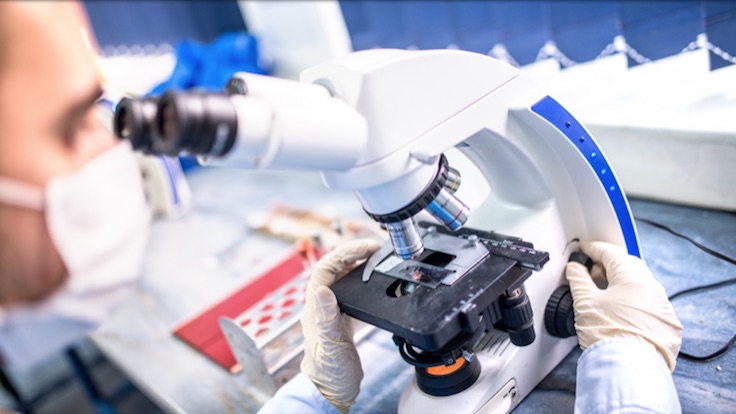Channels

Rotary

Rotary Conference

Laurel Health Centers

Penn Oak Realty

Movin Together

Bank On It

Dunhams Corner

By The Door

Questioning Life

Karschners Insurance

Ag Happenings

Back to Basics

Hornet Happenings

Live From The Hive

Momday Monday

Pennsylvania Politics

The Briefing

Weekly Highlights

Wellsboro Chamber

PA Hospitals Outperforming Nation
HARRISBURG, PA (March 8)—Pennsylvania hospitals’ efforts to prevent infections are paying off, according to a new Health Care-acquired Infection (HAI) Progress Report from the Centers for Disease Control and Prevention (CDC).
The report shows that Pennsylvania hospitals:
– Cut central line-associated bloodstream infections (CLABSI) by nearly 60 percent compared to the 2008 national baseline.
– Reduced Methicillin-resistant Staphylococcus aureus (MRSA) bacteremia infections by more than 20 percent and Clostridium difficile (C. diff) infections by 8 percent compared to the 2011 national baselines.
– Decreased catheter-associated urinary tract infections and surgical site infections associated with abdominal hysterectomies and colon surgeries to below national baselines.
“Every infection prevented keeps patients safe from harm and reduces unnecessary health care spending,” said Andy Carter, President and CEO, The Hospital & Healthsystem Association of Pennsylvania (HAP).
Pennsylvania hospitals and health systems have achieved especially steady, meaningful progress in reducing potentially deadly CLABSIs. In addition to more than halving the national benchmark, Pennsylvania hospitals’ 2014 CLABSI rate (referred to as standard infection ratio, or SIR) was 20 percent lower than the national rate. Pennsylvania hospitals also are improving on this year by year. From 2013 to 2014, they reduced the CLABSI rate by 17 percent.
Hospitals have had similar success in reducing the MRSA bacteremia infection rate. In 2014, Pennsylvania hospitals’ MRSA bacteremia rate was 13 percent lower than the year before and 10 percent lower than the national rate.
“Pennsylvania hospitals have worked hard for more than a decade to measure, publicly report, and reduce hospital infections, and the data clearly show the good results that their dedicated diligence has achieved,” said Carter.
Carter credited CMS and its Partnership for Patients initiative with playing an important role in Pennsylvania’s success. “The partnership has provided the funding we need to support hospitals as they continue to work together, helping one another put in place the best ways to prevent infections,” said Carter.
The more than 120 hospitals that participated in the three-year collaborative effort, called the HAP Pennsylvania Hospital Engagement Network (PA-HEN), achieved significant reductions in HAIs and other types of patient harm. The PA-HEN has received a second round of federal funding to continue this work, and to add a new focus: preventing C. diff infections through effective antibiotic stewardship.
“This new focus puts us right in line with the CDC’s call to action to improve the way we use antibiotics to treat infections,” said HAP’s Michael J. Consuelos, MD, senior vice president, clinical integration. “To curb the development and spread of antibiotic-resistant bacteria—what people sometimes call ‘superbugs’—we need to treat infections quickly and effectively without over-treating.”
Consuelos noted that, while many Pennsylvania hospitals and health systems have already established antibiotic stewardship programs, “this additional funding will allow us to work on the problem together, and make progress even faster.”
ABOUT HAP: HAP is a statewide membership services organization that advocates for nearly 240 Pennsylvania acute and specialty care, primary care, subacute care, long-term care, home health, and hospice providers, as well as the patients and communities they serve. Additional information about HAP is available online at www.haponline.org.
PA Hospitals Now Working Together to Fight “Superbugs”
—-

Katie Byrnes is the Manager of Media Relations at The Hospital & Healthsystem Association of Pennsylvania (HAP). She works with her association colleagues, members, stakeholders, and the media to communicate health care information and advocacy messages that support Pennsylvania hospitals in their efforts to provide safe, high-quality health care.
Katie Byrnes (statewide)
(717) 561-5342
kbyrnes@haponline.org
Twitter: @HAP_Media
Priscilla Koutsouradis (southeast)
(215) 575-3743
priscillak@dvhc.org
Twitter: @DVHCupdates
Credits:






































